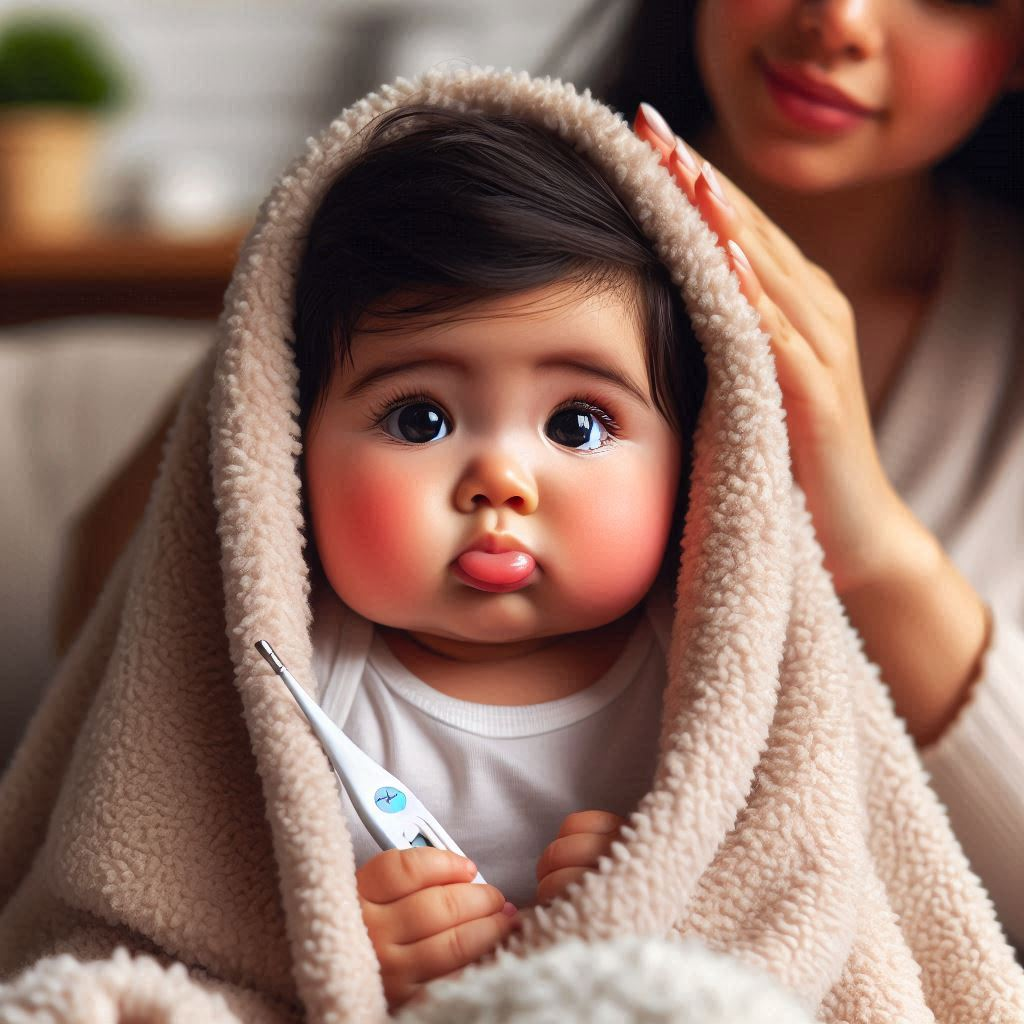98.3°F to °C: Is It a Fever for Babies?
As a parent, you’ve probably lost count of the times you’ve worried about your baby’s health. One of the most common concerns is fever. But what exactly counts as a fever for our little ones? Let’s dive into this topic and figure out if 98.3°F (or 36.8°C) is something to worry about.
Quick Answer
No, 98.3°F (36.8°C) is not a fever for babies. It’s actually within the normal temperature range. A fever in babies is typically defined as a rectal temperature of 100.4°F (38°C) or higher.
My Personal Experience with Baby Fevers
I remember the first time my daughter felt warm to the touch. As a new mom, I panicked and grabbed the thermometer. The reading showed 98.3°F, and I wasn’t sure what to make of it. Was it high? Was it normal? I called my pediatrician in a frenzy, only to learn that this temperature was perfectly fine. That day, I realized how important it is for parents to understand what’s normal and what’s not when it comes to baby temperatures.
Understanding Normal Body Temperature for Babies
Babies are like little furnaces. Their bodies run a bit warmer than adults, which is totally normal. Let’s break down what’s considered a normal temperature range for babies:
- Rectal temperature: 97°F to 100.3°F (36.1°C to 37.9°C)
- Oral temperature: 95.9°F to 99.5°F (35.5°C to 37.5°C)
- Armpit temperature: 94.5°F to 99.1°F (34.7°C to 37.3°C)
So, you can see that 98.3°F fits snugly in the normal range, no matter how you measure it.
Why Babies Run Warmer
Ever wonder why babies seem to be little heat machines? It’s because their bodies are working overtime to grow and develop. Their metabolisms are super-charged, which leads to a slightly higher baseline temperature compared to adults.
Temperature Measurement Methods: Which One’s Best?
Not all thermometers are created equal when it comes to babies. Let’s look at the pros and cons of different methods:
1. Rectal Thermometers
Pros: Most accurate for infants
Cons: Can be uncomfortable for the baby
2. Oral Thermometers
Pros: Easy to use
Cons: Not suitable for babies who can’t hold it under their tongue
3. Armpit (Axillary) Thermometers
Pros: Non-invasive and quick
Cons: Less accurate than rectal readings
4. Ear (Tympanic) Thermometers
Pros: Fast and convenient
Cons: Can be inaccurate if not positioned correctly
What Actually Counts as a Fever in Babies?
Now that we know 98.3°F isn’t a fever, let’s talk about what is. Doctors generally agree that a fever in babies is:
- A rectal temperature of 100.4°F (38°C) or higher
- An oral temperature of 100°F (37.8°C) or higher
- An armpit temperature of 99°F (37.2°C) or higher
Remember, a fever isn’t necessarily bad. It’s often a sign that your baby’s body is fighting off an infection.
The Purpose of Fever
Fever is like your body’s personal security system. When germs invade, your body cranks up the heat to make it harder for those bad guys to multiply. It’s a natural and helpful response, even though it can be scary for parents.
When Should You Worry About Your Baby’s Temperature?
While 98.3°F isn’t a cause for concern, there are times when you should reach out to your doctor:
- If your baby is younger than 3 months and has a rectal temperature of 100.4°F (38°C) or higher
- If the fever lasts more than 3 days
- If your baby shows signs of dehydration (dry mouth, no tears when crying, fewer wet diapers)
- If your baby seems very irritable or lethargic
- If there are other worrying symptoms like difficulty breathing, a rash, or persistent vomiting
Tips for Taking Your Baby’s Temperature
Getting an accurate reading can be tricky with a wiggly baby. Here are some tips:
- For rectal temperatures, use a bit of petroleum jelly for comfort
- For armpit readings, make sure the thermometer is snug in the armpit
- For ear thermometers, gently tug on the ear to straighten the ear canal
- Always clean the thermometer before and after use
What to Do When Your Baby Actually Has a Fever
If your baby’s temperature does creep up to fever levels, don’t panic. Here are some steps you can take:
- Keep them hydrated: Offer plenty of breast milk or formula
- Dress them lightly: Don’t bundle them up, even if they have chills
- Keep the room comfortable: Aim for around 70-72°F (21-22°C)
- Give them a lukewarm bath: This can help bring down the temperature
- Consider medication: Acetaminophen or ibuprofen can help, but always check with your doctor first, especially for babies under 6 months
Common Myths About Baby Fevers
Let’s bust some common misconceptions:
- Myth: Teething causes high fevers
Fact: Teething might cause a slight temperature increase, but not a true fever - Myth: Fevers can cause brain damage
Fact: Typical fevers (under 106°F) don’t cause brain damage - Myth: You should always try to lower a fever
Fact: Mild fevers help the body fight infection and don’t always need treatment
The Bottom Line on Baby Temperatures
So, to wrap it all up:
- 98.3°F (36.8°C) is a normal temperature for babies
- A fever is typically 100.4°F (38°C) or higher when taken rectally
- Fevers aren’t always bad, but they can be a sign that your baby needs medical attention
- When in doubt, call your pediatrician
Conclusion
Understanding your baby’s temperature can feel like a rollercoaster, but knowledge is power. Remember, 98.3°F is just your baby’s body doing its thing – no fever in sight. Keep that thermometer handy, know what to look for, and trust your instincts. You’re doing great, parent!
Have you had experiences with baby fevers? Share your stories in the comments below – your experience might help another worried parent!

Jessica Winter is a passionate parenting blogger with two years of experience guiding new and seasoned parents through the joys and challenges of raising babies. Her insightful posts blend personal anecdotes with expert advice to offer a warm and practical perspective on modern parenting.

